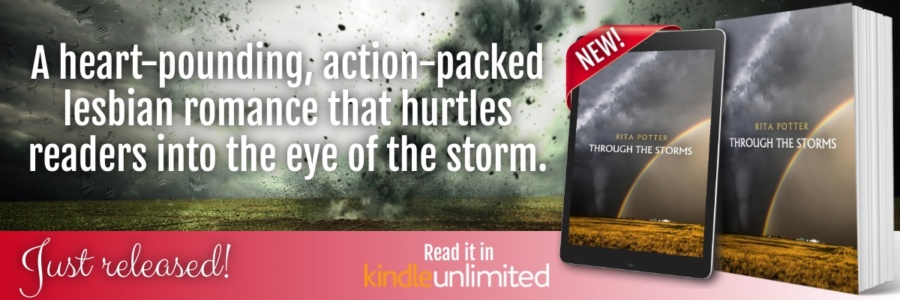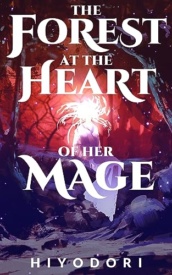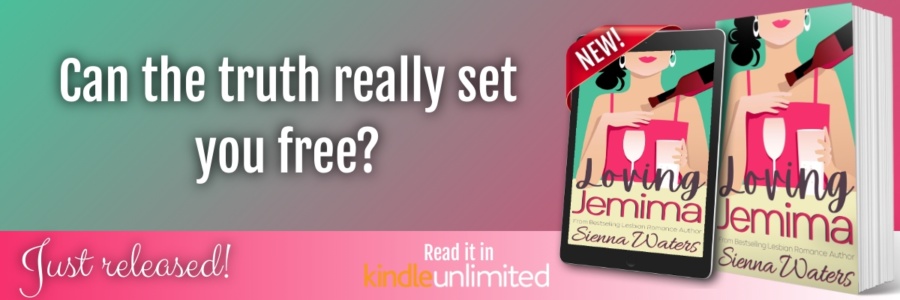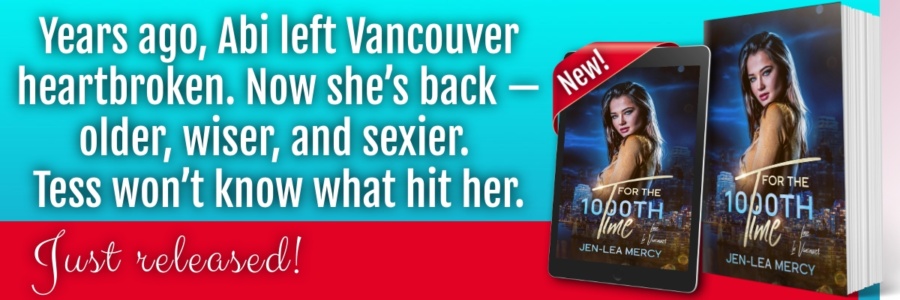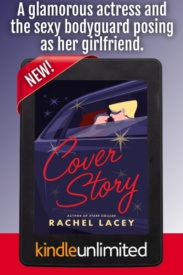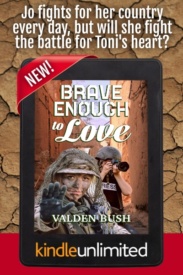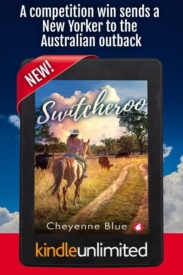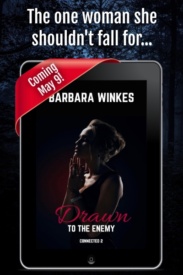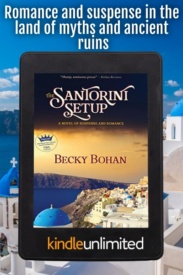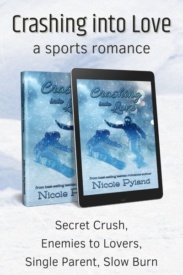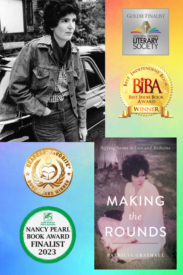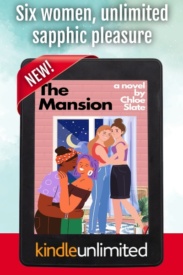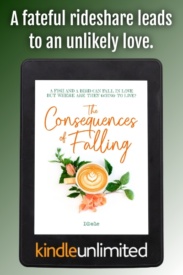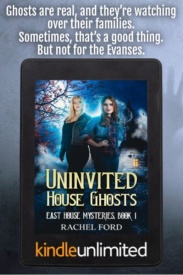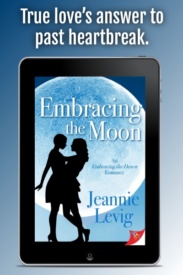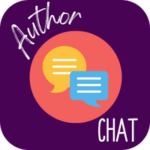
Get ready to learn more about the book The Forest at the Heart of Her Mage in this discussion with sapphic author Hiyodori.
Join us for an exclusive peek behind the scenes as we quiz Hiyodori about The Forest at the Heart of Her Mage, writing, reading, and more.
This book is part of the Fantasy category in the 2024 IHS Reading Challenge.
Why did you write The Forest at the Heart of Her Mage?
Many, many elements of The Forest at the Heart of Her Mage came from a dormant manuscript that I wrote close to a decade ago. Rather than rewrite my original story, I tried to reincarnate it into a brand new novel with the same soul. My previous novel at the time–The First and Last Demon–came about via a similar process, but it had far less in common with its ancestor (another never-published manuscript). Finishing The First and Last Demon made me more confident that I could draw from past material without losing sight of my aims in the present.
What stayed the same between the discarded and published versions of The Forest at the Heart of Her Mage? Multiple character names and roles (including both heroines), the Forest and its monsters, and large chunks of backstory. As for what changed–too much to list, but perhaps the biggest shift was in the age of the main characters. The original book was more of a YA story; in that version, both of them were still in their teens. For the published version, I aged them up to thirty.
Who is your favorite character in the book?
There’s a side character who (in this particular standalone story) calls herself Asa. She also happens to be the protagonist of my Clem & Wist series. So it was tremendously fun to turn things around and depict her through the eyes of another protagonist–especially since The Forest at the Heart of Her Mage takes place in a different country than much of the Clem & Wist series.
I’ve lived outside my own birth country for years, long enough to comfortably call myself fluent in my second language. But when it comes to fine subtleties of pitch and intonation, I’ll never be able to completely erase my foreign accent. I drew a lot from personal experience when thinking about how to write Asa as a character communicating in a second language. (I took plenty of creative liberties, of course, for the sake of readability–just like how most regular dialogue in fiction is much wittier and more concise than everyday conversations in real life.)
What was the biggest challenge writing this book?
The Forest at the Heart of Her Mage ended up being my first published book written in third person. I don’t have any aversion to third person–in fact, if you count all my unpublished work, I’ve probably leaned more toward writing in third person over the course of my life. That said, at the time I hunkered down to draft this story, I was coming fresh off of four consecutive books written in first person (three with the same narrator, no less). So I had concerns about whether I could still write smoothly in third person–and whether that writing style would fit comfortably into my public body of work as an author.
I never questioned the perspective I’d chosen–it felt right for this story and these characters. I just wasn’t sure if I could pull it off. At minimum, I figured I’d feel rusty. But once I got the itch to start writing the first chapter, most of those mental barriers evaporated. In practice, it wasn’t a challenge at all. I just assumed it would be, so much so that I almost intimidated myself into setting it aside and writing something else first.
How did you come up with the title for your book?
I had a totally wild list of working titles for this story. Like most ideas of mine, the final title ended up coming to me in the bath. I remember mindlessly stringing together various key words, turning them backwards and sideways and inside out until I reached a combination that made me stop in my tracks.
The Forest at the Heart of Her Mage does everything I could hope for in a title:
1. It alludes to the setting, the presence of magic, and the sapphic romance.
2. It takes on a different meaning depending on how far along you are in the book.
3. It creates intrigue by inverting a more common / expected turn of phrase (“at the heart of the forest”).
What is your writing process like?
I’m more of a plotter. The final manuscript of The Forest at the Heart of Her Mage is approximately 144,000 words long. The outline is almost 48,000 words all on its own: one-third of the length of the entire book. This does come with one huge caveat, though. I flesh out my outlines and the actual draft in parallel, so at the beginning, my outline would only consist of a couple thousand words of rough notes.
I feel ready to dive into a draft once I have a fairly clear sense of a few climactic moments near the end of the story–basically, once I understand my overall destination. I also need a much more detailed outline for at least the chapter I’m working on, plus the scenes that immediately follow it. This gets me situated to envision how the current chapter unfolds.
I always write in order from start to finish. I always think I know exactly where I’m headed–and I very often find myself inadvertently discovering at least one additional third-act twist that, in retrospect, feels not only inevitable but also absolutely necessary to the story. This usually happens when I’ve written far enough that I need to start developing the details of my endgame outline before I proceed any further. It also usually happens when I’m soaking in a long hot bath. Baths are magic.
Do you have any odd writing quirks?
I do all my novel writing in a computer pane about two inches wide.
To clarify: I use a standard 13.5 inch laptop. I write in Scrivener, which lets you split the software screen into two panes. I split it vertically and adjust the size of the panes so one looks normal and the other looks extremely narrow (two inches or so). I put my outline in the wide pane and my actual novel text in the narrow one.
For years, I’ve done all my reading (eBooks, web novels, fanfiction, manga, news articles, you name it) on smartphones and tablets. Mostly smartphones, and smallish ones at that. I write in a tiny window because it more closely replicates my own reading experience. It’s particularly helpful in revealing places where long paragraphs would turn into massive walls of text on smaller devices. So that’s why I started doing it–but I suspect that it also helps relieve the visual pressure of needing to fill a large blank page. When you work in such a narrow window, even a measly word count can feel like quite a lot of progress! I can’t imagine writing any other way.
What has helped or hindered you most when writing a book?
There are schools of thought that emphasize the importance of writing every single day, and pushing forward through mental resistance, and finishing drafts even if you know they’re going to need a lot of refurbishing afterward. I would never knock any particular approach to writing a novel–if it works for you, it works! Embrace it! But this approach no longer works for me.
I know I can finish a novel. I know I can push all the way to the end of a badly flawed draft. I have past experience with doing major, major revisions and rewrites. That experience taught me a lot–and if I ever really needed to, I’d do it again. I’ve also learned, however, that extensive revisions don’t need to be a mandatory part of my process.
When my enthusiasm flags, it’s not out of laziness or a self-sabotaging reluctance to do the difficult work of writing–it’s always because there’s something wrong with what’s about to happen next. It can take days or more to consciously identify the problem. If I’m patient with myself and the story, if I carefully rethink character motivations and the subsequent chain of events, I’ll eventually regain my excitement to write. And I’ll avoid having to go back and implement big structural revisions after the fact.
Do you feel bad putting your characters through the wringer?
I’m all about that evil glee. I would find it quite difficult to whip up a fantasy romance without at least a couple good stabbings, near-death experiences, brushes with cosmic horror, and so on. Those are some of my favorite scenes!
As gleeful as I get when planning it out, actually writing emotionally heavy chapters can become a little draining. I felt this more strongly during The Forest at the Heart of Her Mage than during any of my other novels–perhaps in part because it’s also my longest book to date, and thus required the most sustained effort (emotional and otherwise).
What type of books do you enjoy reading the most?
I read widely across genres, but I’ve always been most drawn to fantasy and classic mysteries. Although I only write fantasy myself, I’ve probably read more mystery than any other genre. In fairness, mysteries tend to be a bit shorter than epic fantasy doorstoppers!
I love it when authors fool and surprise me–and you can consistently get that experience with a good mystery.
What books have you read more than once in your life?
As a child, I read The Neverending Story over and over and over, to the point where the front cover fell off and had to be taped back on. And I still kept going. Other fantasy favorites met with a similar fate. If I wanted a story like the one I’d just finished, and I wanted it right away, my only choice was to immediately reread it.
I do less rereading nowadays. There are so many more new books to explore, shows to watch, video games to play–and novels of my own to write, come to think of it.


